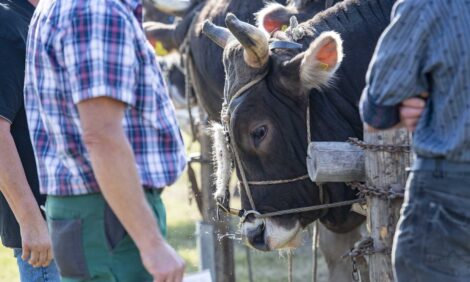



Monitor Beef Herd’s Mineral Consumption
By Clyde Lane, Jr., Professor Animal Science and published by University of Tennessee in Beef Cattle Time, Volume 25, Number 2, Spring 2007How much mineral is your cattle herd consuming? Is the amount within the range recommended on the mineral tag? These are two questions that all beef producers must answer to get optimum production.
Monitoring consumption is quite easy. Just record how much mineral was added to the mineral feeder and the date it was added. When the added mineral is almost all eaten, add additional mineral and record the amount and date. Estimate how much was left when the new mineral was added. Subtract this from the amount previously added to the feeder and divide the answer by the number of animals eating from the feeder. Next divide by the number of days animals were consuming the mineral. This will give the consumption rate per head per day. To convert the consumption from pounds to ounces, multiply by 16. In most situations, the consumption should be between two and four ounces per animal per day. Check the feed tag to see whether your amount is in the recommended range of consumption.
If consumption is relatively close to the recommended amount, do not worry or make adjustments. Consumption will vary from week to week. Give the animals time to adjust after a new mineral mixture is offered. Consumption is generally higher than recommended when a new mineral is placed in the feeder.
Location of the feeder can affect consumption. If the rate is too high, consider moving the mineral feeder farther from the source of water. If the rate is too low, move the mineral feeder closer to the water supply.
If moving the mineral feeder does not change consumption, contact the dealer who supplied the mineral to get a different formulation. Another way to decrease consumption is to add additional white salt. Dry molasses or meal (cottonseed or soybean) can be added to make the mineral more palatable.
When low consumption is a problem, it may be because a high-magnesium mineral is being fed to prevent grass tetany. Magnesium is bitter and mineral manufacturers usually add something to improve consumption so the producer won’t have to.
Cattle require a mineral supplement if they are to perform at the desired level. Monitor mineral consumption to be sure the animals are consuming the correct amount.
April 2007


